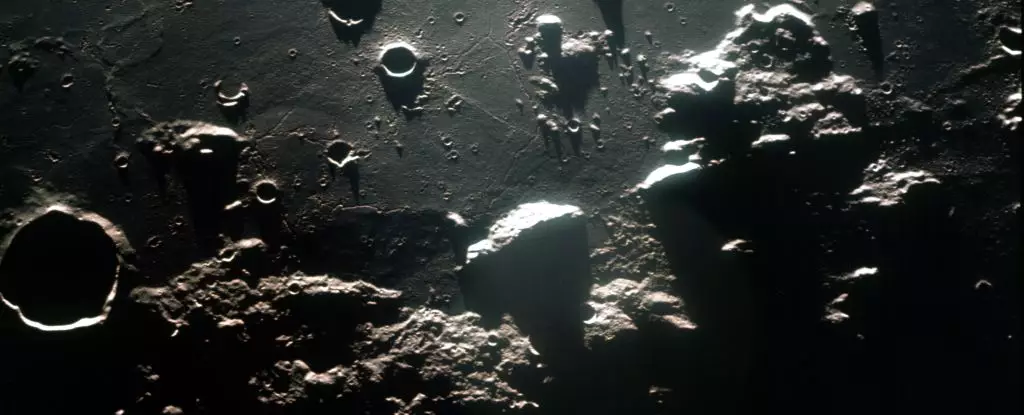The search for water on the Moon has long been a topic of interest for scientists and space exploration enthusiasts alike. However, a recent analysis of lunar craters suggests that our plans for tapping into ancient reservoirs of water ice may need to be reconsidered. Physicist Norbert Schörghofer and astrophysicist Raluca Rufu have revealed that most craters containing permanent pockets of shadow, a potential source of water ice, are actually younger than 2.2 billion years. This discovery has significant implications for future Moon exploration, as the existence of ancient water ice reservoirs is now highly unlikely.
The presence of water on the Moon is not a matter of debate; the crucial question lies in determining the quantity and location of this valuable resource. In recent years, scientists have turned their attention to permanently shadowed regions (PSRs), particularly deep craters, where water ice was believed to accumulate over time. These regions, shielded from sunlight and exposed to frigid temperatures of -163 degrees Celsius (-260 degrees Fahrenheit), were thought to be ideal environments for water ice retention. Previous estimates even suggested that these craters could contain layers of ice several meters thick.
However, the recent analysis challenges these assumptions. The team of researchers behind the study discovered that the PSRs have not been shielded from the Sun for long enough to accumulate such significant amounts of water ice. The findings build upon previous research that sought to reconcile the rate at which the Moon is moving away from Earth with its estimated age. This discrepancy led to the investigation of Earth-Moon resonance and changes in the lunar axis orientation, ultimately contributing to the understanding that PSRs are much younger than previously believed.
To understand the age of lunar craters and the presence of water ice on the Moon, it is vital to consider the Late Heavy Bombardment that occurred approximately 3.8 billion years ago. During this period, comets and asteroids bombarded the inner Solar System, including the Moon. The heat and volcanic activity of a still-forming Moon would have released water from its interior, providing an opportunity for PSRs to accumulate water ice. However, based on current models of the Moon’s spin-axis reorientation and the evolution of the Earth-Moon distance, the PSRs are relatively young. Consequently, any water ice found within them is also more recent.
This new understanding of lunar craters has significant implications for future lunar missions, including NASA’s Artemis III mission. The selection of landing sites has been partially based on the proximity of PSRs. However, the discovery that older PSRs could potentially contain more water than younger ones provides valuable insights for mission planning. By identifying and prioritizing older craters, scientists can improve their chances of finding substantial water ice deposits for both crewed and uncrewed missions.
The analysis of lunar craters and the reassessment of the age of PSRs mark a pivotal moment in our understanding of the Moon’s resources. While the loss of ancient water ice reservoirs is disappointing, it opens up new opportunities for exploration. By focusing on older craters, scientists can refine their search for water ice and optimize the utilization of this vital resource. As we embark on the next phase of lunar exploration, these findings will shape our approach to future missions and pave the way for human presence on the Moon.
The analysis conducted by Norbert Schörghofer and Raluca Rufu challenges previous assumptions about the age of lunar craters and the presence of water ice on the Moon. The discovery that most craters with permanent pockets of shadow are younger than 2.2 billion years suggests that ancient water ice reservoirs do not exist. However, this newfound knowledge provides valuable insights for future lunar missions, enabling scientists to identify older craters that could potentially contain significant amounts of water ice. With this understanding, we can adapt our strategies and maximize the chances of successful exploration and utilization of water resources on the Moon.


Leave a Reply